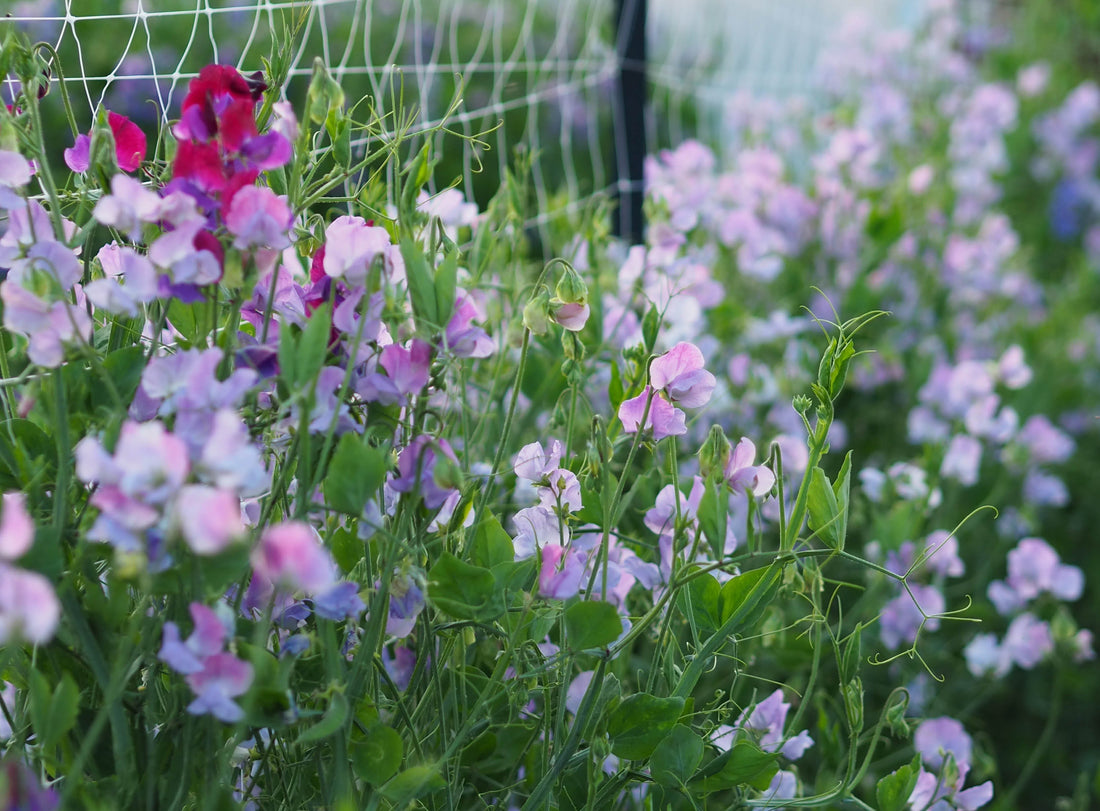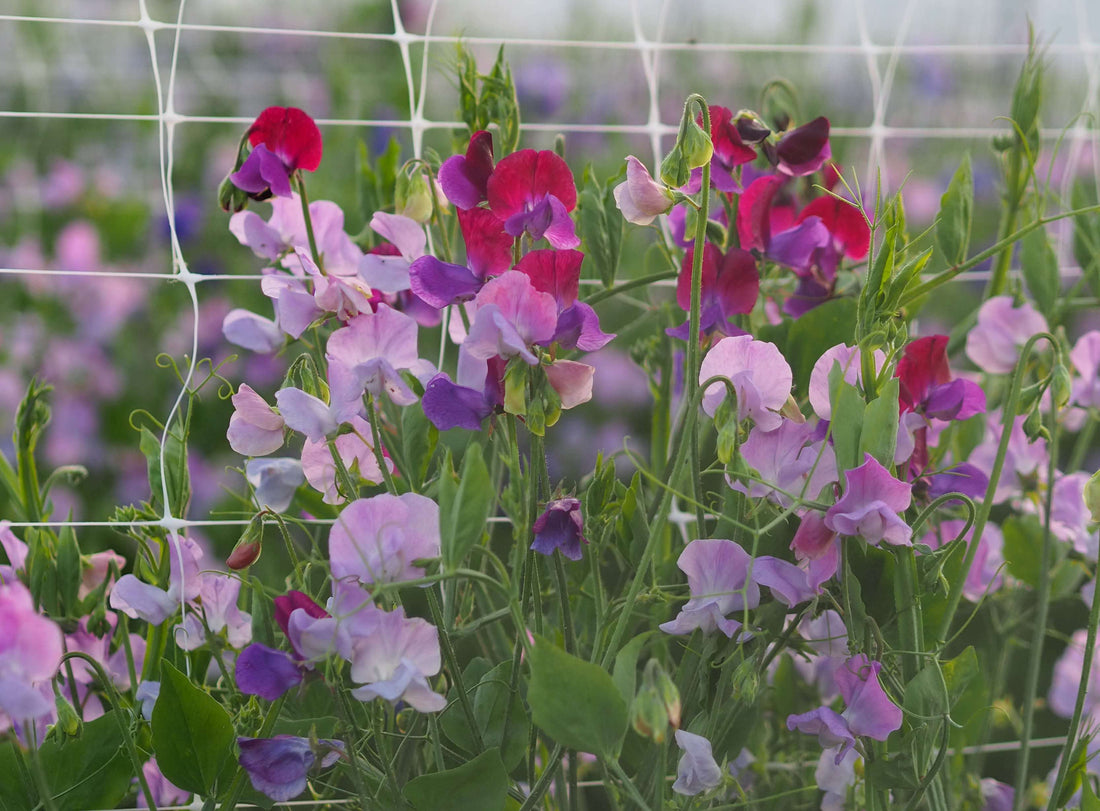Sweet peas
What's summer without sweet peas, without that intoxicating scent, those delicate colors! Oh, how fortunate that there's always a piece of fence or a willow trellis somewhere; in a pinch, you can simply stretch some string between the three vertical supports of the canopy, and off you go.

Sweet peas … a big family
Sweet peas belong to the family Lathyrus (botanical genus Lathyrus) and the Faboideae (Fabaceae). Mainly offered are perennial sweet peas (Lathyrus latifolius in both species and varieties) and annual sweet peas (Lathyrus odoratus). As the species name (odoratus) suggests, annual sweet peas are the ones with such a lovely fragrance! Perennial sweet peas return every year, blooming profusely and beautifully, but they only come in a few colors and, unfortunately, they don't smell at all. But they're great for hiding ugly chain-link fences, and even if they always look so rickety in pots, they thrive in the garden as long as they're placed in a sunny spot and have nutritious, well-drained soil.
Fragrance and color variety
Annual sweet peas, on the other hand, make gardeners dream and revel. The colors alone: soft, delicate lilac, very dark burgundy, cream, white, white with a lilac-blue edge, light pink, bright red... oh, what a huge selection there is! There are even scarlet and apricot varieties, and some with stripes and strange color gradients! Especially in England (of course...) – there's a special sweet pea society there (www.sweetpeas.org.uk) and endless varieties. But the selection is growing here too! If you can't decide, we recommend the 'Mattucana' variety: It bears bicolored flowers in vibrant purple and blue and has a particularly strong fragrance. It was bred back in the 1920s.
Dressed up chic
The great thing about sweet peas is their quality as cut flowers – not their longevity, but their simplicity: simply cut them, put them in a vase, and you're done. They always look good, and the best part is, the more you cut, the more beautiful and lush the blooms become! So harvest them boldly and enjoy!
Early cultivation is worthwhile
In general, sweet peas are easy to care for and easy to grow in the garden. They are propagated by sowing. It's best to start in early spring; it's important to always use fresh seeds. Soak the sweet pea seeds before planting them in the soil – in lukewarm water, preferably overnight. For starting, use deep pots or multi-pot trays, as sweet pea roots tend to grow deep quickly.
These English modules, which have very deep root balls, are particularly practical for this. These can be opened up to remove the ball without damaging the roots. 'Rootrainers' is the name of these growing pots. Propagation can begin in March in a cold frame or an unheated greenhouse. A sunny wall is also a good spot for growing sweet peas. Once the sweet peas are growing, the main stem can be pinched out; they then grow more beautifully and can produce better flowers. Opinions differ as to the best time to plant out: My colleague says when they are 10 cm tall, I would say after the Ice Saints in mid-May. Or a little earlier, because the plants can tolerate a bit of frost if they weren't pre-cultivated in too warm a place. If you've missed the deadline for pre-growing, you can probably find pre-grown seedlings somewhere in mid-May (at a trusted nursery...) – or you can sow the sweet peas directly in the soil later. The summer location for sweet peas should be humus-rich and well-drained; they prefer a sunny or partially shaded spot and appreciate some organic fertilizer or compost.
Vetch problems
Vetch (like virtually any other plant...) has problems with snails and sometimes aphids. The only effective treatments for snails are runner ducks or collecting, and for aphids, nettle broth or simply "living" (that will pass, too) can be used. In late summer, or when it's been very, very hot or terribly rainy, vetch sometimes gets powdery mildew. This can be prevented with timely and adequate watering.
Everyone wants to reach high
Most sweet pea varieties climb and need something to hold onto. If necessary, you can wrap wire mesh around it; that's enough for them. Or a fence, simple rough strips, climbing obelisks made of willow, metal, wood, or whatever – the sweet peas will find their way. The most important thing is: keep cutting them, and they'll bloom all the more beautifully. So off they go and put them in a vase! Sweet peas also look beautiful in a simple glass of water – and what joy you can bring to others with them – because "sweets always smell like they used to at my grandma's..."
Just make sure the plants don't set seeds (this is true of all annuals, whether sweet peas or basil: once they set seed, they're soon gone...). And the best way to prevent that is to pick them and bring the scent of summer into your home!





































































































